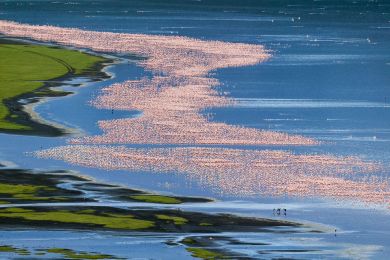By buying this product you can collect up to 178 loyalty points. Your cart will total 178 points that can be converted into a voucher of 35,60 €.
 View larger
View larger
Picture information
Harvesting almonds, Majorca
Yann ARTHUS-BERTRAND
Art Photography by Yann ARTHUS-BERTRAND, harvesting almonds in the Balearic Islands, Majorca. The ancient cultivation of almonds has remainedvery traditional.
Data sheet
| Orientation | Landscape |
| Color | Green |
Harvesting almonds, Majorca
Yann ARTHUS-BERTRAND
Art Photography by Yann ARTHUS-BERTRAND, harvesting almonds in the Balearic Islands, Majorca. The ancient cultivation of almonds has remainedvery traditional.
Fine Art Photography
Print by Experts
100 % Made In France
A recognized expertise, a search of permanent quality.
Printed by a professional photographic laboratory.
All prints are made to order, controlled by the Technical Director.
A certificate of authenticity is provided with each photograph.
Framework made by selected materials to give you the best results. every step of the processing is monitoring by experts.
Loyalty points
Gift Card
Don't miss the opportunity to do the best present...
The whole Yann Arthus-Bertrand photos available with Hemisgalerie gift card.
Lets your guest choose the best image.
Amount from 50 €, create and download directly on our website, valid for one year including promotions.
The original gift for all events
More info
Originating in Central Asia, almond farming spread around the Mediterranean Sea under the influence of the Greeks and Phoenicians. Ancient Romans referred to almonds as "Greek nuts". In the Balearic Islands, the ancient cultivation of almonds has remained traditional, much like wine growing or olive farming. Fruits are shaken down from the branches over sheets spread out beneath. The low productivity of each almond tree (2-5 kg of fruits per tree) is compensated for by the large area planted with trees; however, that area has diminished considerably because old trees have rarely replaced. With a production of 200,000 tons in 2005, Spain nevertheless remains the second largest almond producer in the world (far behind the United States whose almonds - 670,000 tons in 2005 - account for 70% of the world's production). Spanish almonds supply the European market where they are increasingly highly prized in various forms in confectionary and pastry (dried sweet almonds), as aromatic agent (essence of bitter almond) and in cosmetics (sweet almond oil).













































































